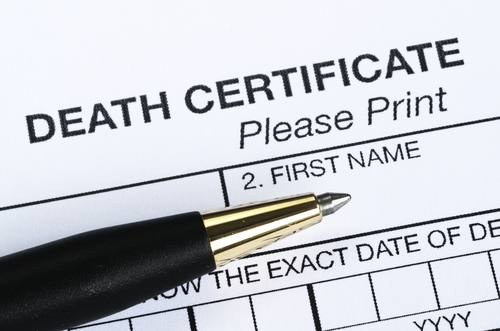8 Essential pointers for issuing death certificate [Medico-Legal]
M3 India newsdesk Feb 11, 2018
It is a difficult situation for a doctor when a young, healthy person is brought to him who dies unexpectedly and relatives pressurise the doctors to issue Death Certificate.

Issuing of a Death Certificate is one of the onerous duties of a General Practitioner, which has medico-legal implications. So here are some guidelines to be followed while dealing with such situations.
1. First and foremost, the cause of death is to be based only on Clinical finding and not on extraneous factors. Death Certificate is to be issued only when the treating doctor is fully satisfied as to clinical diagnosis and corroborative diagnostic test. A Doctor may certify death but the cause of death is to be issued only on verification and after satisfying all facts of the cause, causing and resulting in death. In case of suspicion of death due to unnatural causes, the Doctor must inform police for further investigation and postmortem immediately. The death must be informed to the local Municipal Authorities, within 72 hours, in any case. Even in case of new born children, still born or premature children, Death Certificate is necessary. Deaths in case of police custody, public institutions like remand homes, asylums and under medical procedures must be reported to Coroner.
2. Death Certificate is to be issued by a registered medical practitioner who has been attending the deceased during his lifetime or has attended the patient within past 14 days prior to his death or is satisfied as to the cause of death. One Doctor should not certify cause of death of his colleagues patient unless he too had attended the patient.
3. Death Certificate is to be issued only in a single copy, free of charge. The Death Certificate cannot be withheld for pending fees from the relatives etc. The Doctor is required to maintain carbon copy of the Death Certificate.
4. The Death Certificate can be in two parts,
Part I: Records (i) the disease or condition directly leading to death and (ii) morbid conditions, if present, giving rise to the cause mentioned in (i).
Part II: Records: Other significant conditions contributory to death, but not related to the disease or condition causing it.
5. The Death Certificate must be filled completed and signed. Death Certificate must contain at its bottom, the qualifications, registration under Indian or State Medical Council of the Doctor certifying it.
6. Death Certificate must be handed over to the Police for final Panchnama. The Police Authorities have final say in the matter. If the Police Authorities, still want to have a postmortem, they can order so.
7. In cases of criminal offences, due precaution must be taken before issuing the cause of death. Incorrect or inadequate record while issuing Death Certificate as may unknowingly help in destroying valuable evidence of a crime. Once the body is cremated, the evidence is lost and the entire evidence revolves around the Death Certificate, it can convict the Accused or leave the pysociopath, for the mistake in the wrong recording of Death Certificate. Doctor issuing Death Certificate must ensure that whatever is written in the Certificate, if required can be proved in the witness box to prove the reasoning of death, which can lead the case to its conclusion. Therefore, observations in the Death Certificate must be specific, highlighting to the apparent cause of death. The exact nature of injuries, depth must be described accurately.
8. You may take photographs of the dead body, in certain cases. In case of specific cases under criminal provisions, wherein the death is unnatural and suspicious, it would be appropriate to take photographs of the dead body with precision as to observations made in the Death Certificate as additional evidence and to be given for Panchnama to the Police and one copy can be kept in the record of the Doctor for his personal use at the time of evidence with his notes.
The writer is a practising High Court Advocate.The opinions, beliefs and viewpoints expressed by the writers and forum participants on this website do not necessarily reflect the opinions, beliefs and viewpoints of the editors or publisher of the website. Readers are advised to exercise their own judgement while using the content.
-
Exclusive Write-ups & Webinars by KOLs
-
Daily Quiz by specialty
-
Paid Market Research Surveys
-
Case discussions, News & Journals' summaries